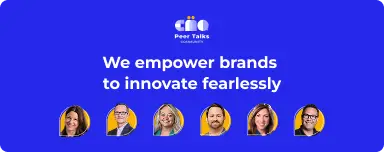Social Media advertising is a key component of every brand’s digital marketing strategy. We are always searching for the most effective ways to use our marketing budget, get more engagement, customers, and ROI. Facebook is always asking us to boost some of our most effective posts to get even more engagement, but what’s the difference between boosted posts and ads? In this article, we will figure it out.
Boosted Posts VS Paid Ads
Terms for “boosting” may vary on different platforms. For example, what they call boosting on Facebook is called sponsoring on LinkedIn. But there is no difference in how it works. It just means that more people will see your post on this social media platform because simply posting on your channels does not guarantee your followers will see it in their feed.
Boosted posts are easier to manage because they are not a part of a larger campaign normally. The problem is that your options for targeting, scheduling, budgeting, and ad formats are limited.
Paid Advertising is created specifically for an ad objective and usually is part of a larger campaign. There can be multiple copy and graphic/video variations for testing and a strong call-to-action to get people to click through to your website or landing page. Paid ads are one of the first steps in an integrated sales funnel.
Boosted Posts Pros
- One of the simplest types of paid posts you can publish on Facebook or Instagram. Boost any post directly from your Facebook page without using a Facebook Ads Manager.
- You can add a powerful CTA to your existing post to increase your click-through rate.
- Boosted posts allow you to optimize for several distinct goals like link clicks, post engagement, messages.
- You can set a total budget and timeframe with the daily budget calculated automatically.
Boosted Posts Cons
- You can only boost the post as it is without adding, adjusting, or customizing any creatives — no changes to the image, headline, and copy beyond what you’ve already posted.
- You can’t take advantage of dynamic creative to optimize results across your ad sets.
- You can’t adjust your budget delivery or set cost controls on your budgeting.
- Your choices for which platforms you deliver to are limited. You can either allow Facebook to choose placements or keep them contained to the basic News Feed/Instagram feed placements.
Ads Pros
- You can choose from a wide selection of campaign objectives, like brand awareness, consideration, etc.
- You can adjust your ads’ budget delivery for maximum effect. For example, standard or accelerated budget delivery.
- You can schedule your ads, in case you want it to run certain times of day or days of the week.
- Ads Manager gives you more flexibility when it comes to audience selection. You can also exclude users within your target audiences and create complex combinations.
- You can quickly select individual placements across all Facebook ad properties, including Instagram, Facebook, Ads Network, and Messenger.
- Ads Manager offers dynamic creative, A/B testing of Ad Sets to determine which specific iterations work best.
Cons
- To work with an Ads Manager, you need a Facebook Ads Account and a Facebook Business Manager as a way to keep your Ad Account, Pages, Instagram Accounts, and Payment Methods all connected in one spot.
- Even with some experience running ads, Facebook Ads Manager requires a more deep knowledge of how Ad Structure works within Facebook.
We all know that the Facebook platform can be confusing, and with things changing by the week, keeping up with the process can be challenging. But remember that there may always be a good time to boost a particularly effective post for that extra eyeballs and long-term thinking with your ad planning by working things through Ads Manager. All you need is a little bit of practice and experience.



